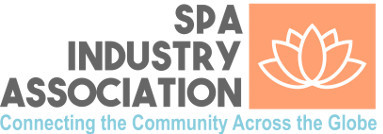
by: Sherrie Tennessee In honor of Black History Month Disney re-released the movie Black Panther in the theater for a free showing all month. I had the opportunity to see the movie again and as not so big Marvel fan that is a huge deal for me and especially my son. Now as we step into Women in History month, the same feeling surfaced. The idea of not only diversity came to mind but the even bigger topic of inclusion, though sometimes used interchangeably the words nor their usage are not the same.
Webster dictionary defines diversity as “the condition of having or being composed of differing elements: variety especially the inclusion of different types of people (such as people of different races or cultures) in a group or organization.”
Inclusion is defined as “the involvement and empowerment, where the inherent worth and dignity of all people are recognized. An inclusive university promotes and sustains a sense of belonging; it values and practices respect for the talents, beliefs, backgrounds, and ways of living of its members”
Interestingly enough, the number of Black-owned business has grown, African Americans owned 19% of all women-owned businesses with the overall number increase sing by 605% between 2007 – 2017, higher than any other demographic, according to American Express Annual State of Women Business report. In addition, a recent Nielsen report stated that African American spend 9x more on hair and beauty products. The money spent by African American consumers exceeded $1.2 trillion annually, with $473 million in total hair care, $127 million grooming aids and $465 million in skin care preparations and we spend a whopping $1.1 billion on beauty annually according to the 2018 Nielsen. So many minorities owning beauty location as well as spending millions of dollars at the location. Why is that not reflected in the leadership in the beauty industry? In an effort to go beyond my experience in the Beauty, Spa, and Wellness industry, I sought the insight of a few power players in the industry and what strategies they would recommend ways to increase diversity in the beauty/spa/wellness industry Patrick Huey, Monique Blake, and Tosh Baker.
Monique Blake is a kindred soul, as a fellow therapist and educator – Monique is the National Director of Body for Red Door Spa. When I asked Monique about what steps can be taken to diversify the leadership in the Beauty/Spa/Wellness industry to better reflect the consumer and owners?
Her answer, of course, focused on education – “as this is always a big part of the answer. Let’s face it, wellness is a need for all people. But every need is unique. Begin by having a better understanding of these unique needs. Another important step is to consciously attract talent that reflects this diversity. Encourage talent to pursue spa management program and jobs. These decision makers from diverse backgrounds can speak directly to the consumer’s unique needs. People naturally gravitate to messages and wellness/spa programs that speak to them and their personal sense of wellness, beauty. But there are not many of these messages in the mainstream spa industry and that may be in part because there is an opportunity for diversity in the decision makers. The wellness community has a great opportunity to become an ambassador for a more diverse consumer and order to do this we have to understand and attract this consumer on a variety of levels.”
I posed the same question to Toshiana Baker, another fellow educator, therapist, and spa industry consultant. Toshiana’s response focused more on the companies explaining “organizations truly committed to Diversity and Inclusion initiatives should integrate this throughout all levels of its operation. If there is a question of diversity needed in leadership, one should look at all levels of representation in the organization to determine where there may be additional opportunities to diversify teams. Every employee hired should have access and opportunity to leadership development initiatives and shown a career path that includes opportunities for leadership roles.”
I then reached out to my former Director and friend Patrick Huey, currently the Corporate Spa Director at Montage and ISPA (International Spa Association) Board Member. Again, asking the same question of how to increase diversity in the industry. Patrick looked at the topic of not only diversity but also inclusion – The lack of diversity in spa and hospitality leadership positions reflects the lack of diversity in leadership roles across all industries in the US. The same societal and educational forces that inhibit the presence of people of color at top levels of the business hierarchy exist within our industry as well. The unique aspect about the spa is that it may be one of the few industries where the presence of women in leadership roles is seen as normative and, in some ways, expected.
Going beyond the typical offerings I asked – what can be done to create diversity in the product and service offering?
Monique – There are groups of consumers who do not see themselves and their needs reflected in spa product selections or services. The spa industry has to make greater effort to be aware of their marketing and their choice of service and product. Again, this comes down to better education, attracting a more diverse decision maker and considering how to create or customize services and products to make the needs of a diverse consumer.
Toshiana noted there are certainly diverse products and services out there. They just have not been readily accessible as others. Instead of looking at the “tried and true” favorites, those in positions to make decisions to provide exposure to brands should challenge themselves consistently to look beyond the usual. There are innovations being made in products and service offerings that represent all areas of the globe. Consumers are now demanding that the profession provide more information and lead the way in offering products and services that better suit their diverse preferences.
The mindset can be seen in a variety of ways and have led to the consumers to develop their own products instead of waiting on the mainstream companies to fill the void. Case in point – a recent Cosmetic Design article noted the launch of luxury skin care line for women of color, EPARA, developed by Ozohu Aodh and combined sources with Julee Wilson, Beauty Director at Essence magazine. In the words of Julee Wilson – “we deserve luxury products.” Julee like others are making the leap from consumer to beauty product entrepreneurs. In my own backyard, of Washington, DC, longtime friends Kimberly Smith and Amaya Smith had a similar idea and “The Brown Beauty Co-op” for Black and Brown women to ensure the diverse range of products needed are available to consumers.
Finally, I asked the industry experts – what do you think will be the long-term effects of diversity on the growth strategy for Beauty/spa/wellness industry?
For Monique indicated diversity is related in terms of effects is that more spas will have access to these fast-growing and profitable markets. Long term effects are that spas will position themselves as the industry that is invested in the wellness for all types of consumers. Modern medicine has a history of disenfranchising women, people of color, and people for the LGB communities, etc. As more and more consumers seek alternatives to traditional approaches, spas have a unique opportunity to firmly establish ourselves as the wellness and beauty oasis for a more diverse consumer.
Toshiana believes that the consumer demand will lead the changing tide in diversity. “As the world economy becomes more diverse, so too will the beauty, spa and wellness industries. As long as we each remain committed to providing innovative and quality offerings that meet the needs of all our clientele, enriching their lives regardless of their classification, we will find ourselves expanding our perspectives. It is just as we were once committed to analog methodology and obstinate to change, but all now embrace the digital age.”
Patrick quoted Supreme Court Justice Ruth Bader Ginsburg aka The Notorious RBG was once asked how many women a good number for the Supreme Court and she would be stated nine. Similarly, when speaking about issues of diversity in leadership positions, these roles should reflect the society at large. To create more diversity in leadership positions, we have to have people of color in the educational pipeline to fill these positions, and we have to begin the process not in the college and universities, but at the Pre-K and elementary levels, where the habits of learning are established.
It is so important because as Andrew McCaskill, Senior Vice President, Global Communications and Multicultural Marketing, Nielsen stated: “if a company doesn’t have a multicultural strategy, it doesn’t have a growth strategy.” I agree with the statement wholeheartedly, diversity is being achieved in the Beauty/Spa/Wellness. Though there is significant growth in the beauty and wellness industry in diverse communities, the next step in the process is inclusion, getting a seat at the decision-making table to positively impact the diversity seen in the industry.

Sherrie Tennessee, CHE, Doctoral Candidate
Director of Education, SpaSOS
Author, How to Open a Day Spa:31-Day Guide
FB: SpaSOS
TW: @the_spasos
Instagram: @thespasos
Skype: Sherrie.Tennessee



